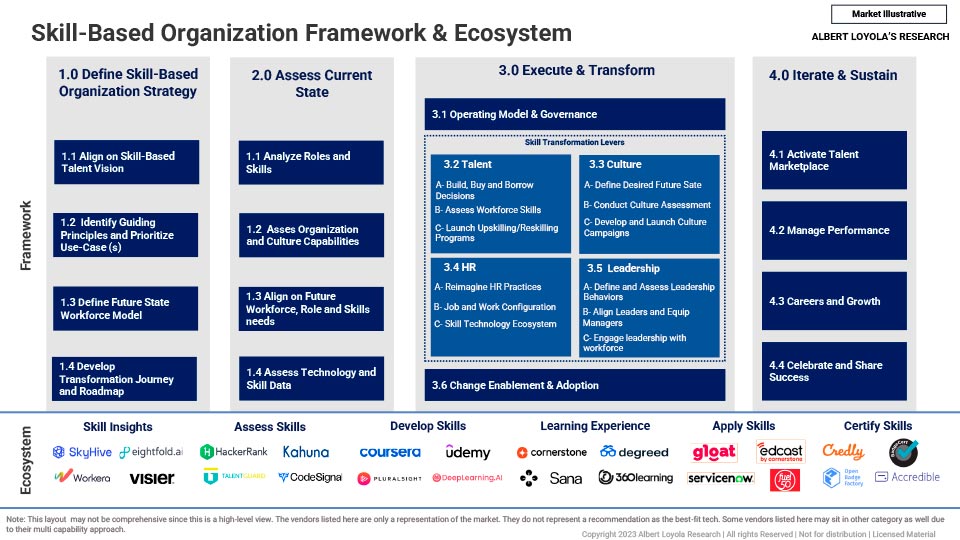
Enterprise Learning Strategy & Experience
The Challenge: A global insurance organization with over 100,000 employees is undergoing a significant M&A
Hello, and welcome back to my Blog!
As we wrap up this year, a skill-based organization is top priority I hear in client conversations. CHROs and HR Leaders want to leverage the power of AI and skill data to shift from job-based talent practices to a new operating model with skills at the center of the design.
A skill-based organization (SBO) requires a shared-vision and a new approach around skills and talent. Companies started off this journey driving upskilling/reskilling initiatives to address talent skill gaps (especially when it comes to technology skills) to support AI transformation and using skill technology partners for enablement.
However, SBO efforts goes far beyond upskilling/reskilling and/or building a skill taxonomy/redesigning jobs. Skills are connected across the entire talent value chain (from hiring all the way to mobility and careers) so there are a couple aspects that need to be discussed:
Skill Technology Ecosystem
With AI breakthroughs, now we have a variety of technology capabilities and vendors in the ecosystem that are able to provide labor market analysis, identify and attract talent, analyze and assess skills, recommend jobs and develop learning pathways, provide real-time analytics as well as facilitate internal mobility etc. However, designing, building and integrating a skill technology architecture becomes a nightmare.
Companies have legacy systems, multiple skill data repositories, often decentralized, fragmented, and inefficient. Streamline and centralize your technology stack is something that needs to be well-defined and integrated with your data strategy. Start with your future technology blue-print and leverage enterprise technology architecture.
SBO Considerations
What Lies Ahead?
With Gen AI evolving every day (Gemini was released by Google last week), we will see that many of the analysis around jobs, work and skills simplify making the process of implementing skill-based organizations more smoothly and help to address current and future skills gaps.
The one pager below describes where to start.
Did I miss anything? Let me know your thoughts.

Note: All views expressed in this article do not represent the opinions of any entity whatsoever with which I have been, am now, or will be affiliated. My opinions are my own.
Share it with your network:

Albert brings global market research experience to help executives harness intelligent technologies, reinvent HR, re-skilling and employee experience across NAR, APAC, LATAM and EMEA regions.

The Challenge: A global insurance organization with over 100,000 employees is undergoing a significant M&A
